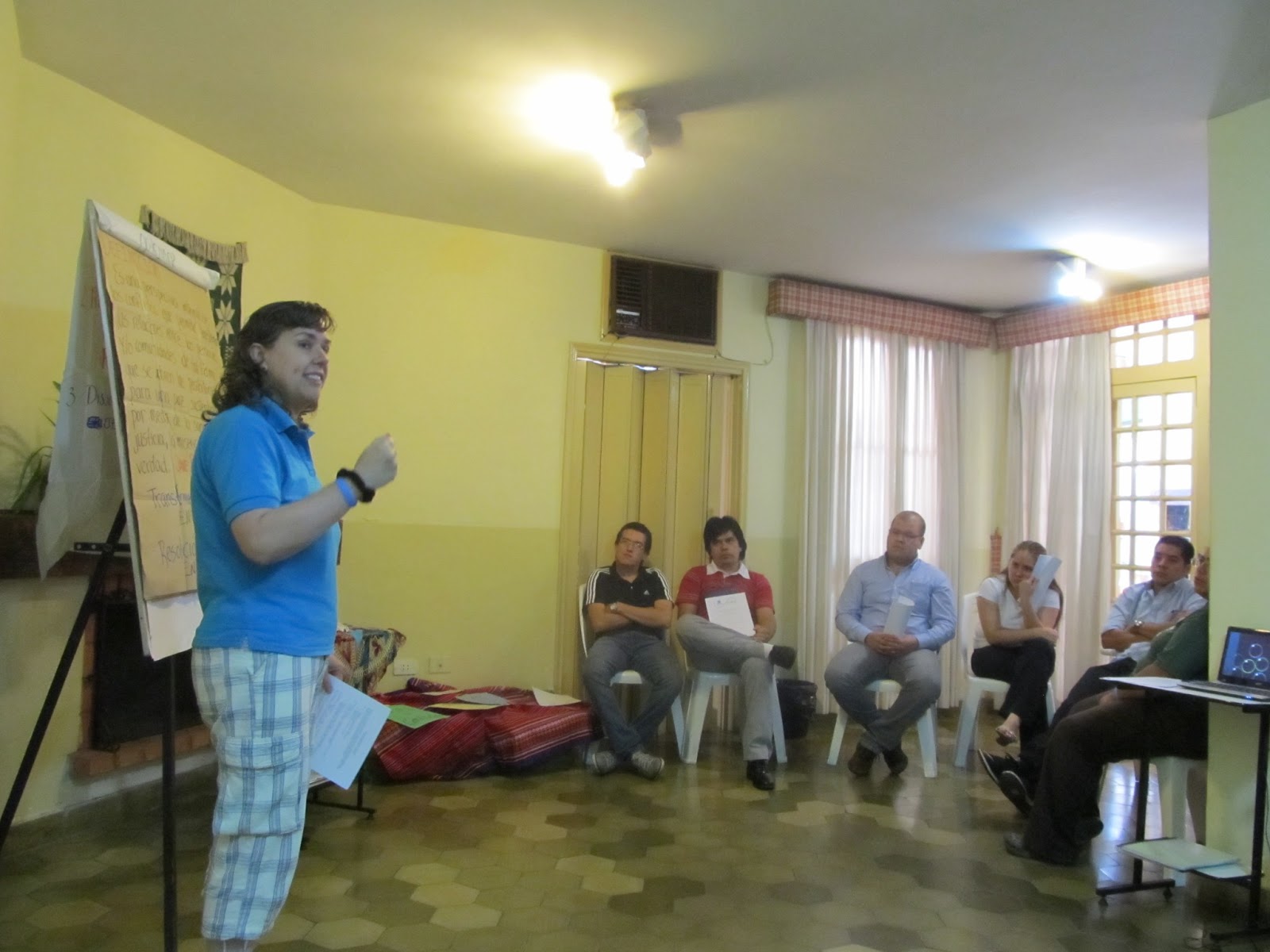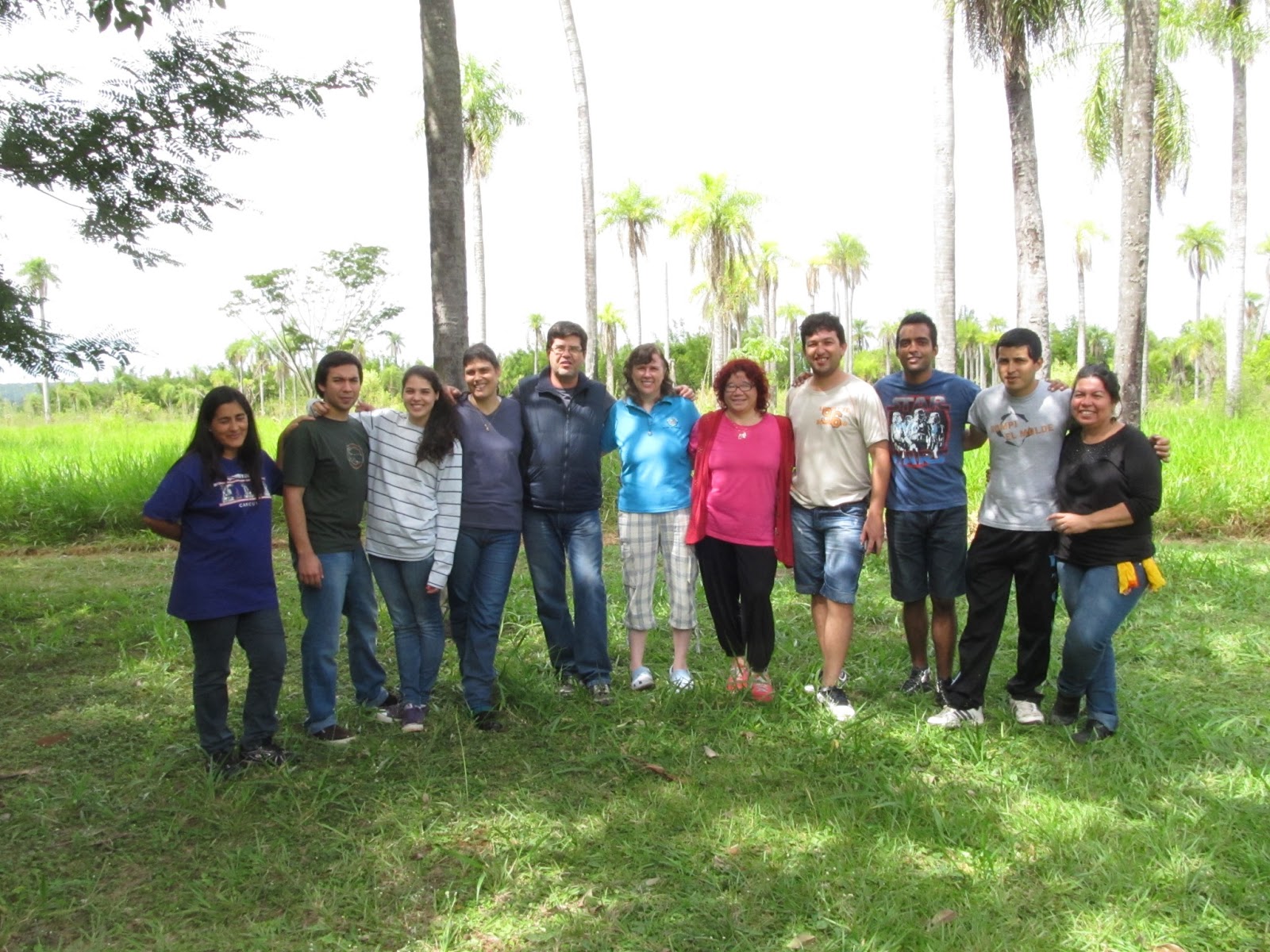Edwin Markham
Outwitted by Edwin Markham
He drew a circle that shut me out -
Heretic, rebel, a thing to flout,
But Love and I had the wit to win:
We drew a circle and took him in!
sábado, 20 de abril de 2013
Motorcycles in Resistencia
Today, Ricky from the church came to pick me up to take me out with another youth from the church for afternoon coffee at a coffee shop on the main square. He picked me up on his motorcycle and off we went - without helmets, zipping the wrong way up a one way street and on through the streets of Resistencia. Here the motorcycles rule the road. Don't worry, we arrived fine and had a great time. But, I have never seen so many motorcyles breaking every possible traffic law and the laws of prudence and self preservation. For them there are no red lights, no speed limits, no yield signs. It has been another cultural experience. Thanks to all of you who have been praying for me!
Transformational learning model
At the Shalom Center
A.
Three learning processes
Transformational Learning is made up of
three learning processes as described by Merardo Arriola Socol in his book Buscando la vida (Searching for
Life). These are:
A. Experiential learning: “A process whose departure point is the rich
and complex experiences of people, where the individual seeks, through action -
reflection, the full development of his or her physical, emotional, mental, and
spiritual potential. Hence,
experiential learning allows us to see learning as a process in which 1) the
departure point is a person's experience and 2) the arrival point is the
integration and the learning achieved from the experience. (Arriola Socol
15)."
B. Significant learning: “Is
a process whose departure point is a significant and marking experience where
the learner seeks personal transformation. The meaning of this transformation
invades the person completely and incites him or her to search for other
significant learning. Significant
learning makes us aware of the fact that 1) the departure point of the learning
is a significant and marking experience, and 2) the integration and learning
achieved are significant, marking, and durable. (Arriola Socol 15).”
C. Corporal learning: Also known as "total
learning”, is that which the departure point is a bodily experience in
which each person seeks to develop, in harmony and unity, his or her physical,
emotional, intellectual and spiritual aspects.
Corporal learning makes us aware of the fact that 1) the departure point
for significant experiential learning is corporal where our whole self is committed;
2) the integration and the learning are eminently corporal. (Arriola Socol
15).”
“In
synthesis, we can say that experiential learning is always a significant and
corporal learning. As in all learning,
it has a common objective: personal
transformation in all of its dimensions (Arriola Socol 15).”
domingo, 14 de abril de 2013
Transformation
Transformation
Once the process of reconciliation has begun,
the doors are opened to the transformation of violence, alienation, and
destruction converting situations of conflict into spaces for potential growth.
In nature, ecosystems function on the basis of
the interdependence of living organisms and the environment. These complex systems composed of cycles,
such as that of water or life and death, are thrown out of balance when
internal or external forces alter the normal interactions. Under these circumstances,
a system can enter into a crisis, a decisive period in its survival. The crisis is the junction of two paths: one
that leads toward growth and transformation and the other toward destruction. Human beings also form relational and
societal systems. "In the human
experience there are social systems with patterns of interaction
(communication, relational rules, distribution of power, etc.) that are also
essential to the nutrition and growth of human life. [. . .] The patterns of
interaction in these emotional relational systems help determine the well being
of individuals, communities, and the whole of society. Healthy relational systems nourish. Toxic relational systems, destroy. (Smucker
235)."
The mission statement of the Shalom Center
The vision of the Shalom Center
lunes, 8 de abril de 2013
Afraid of a mosquito bite??
Yes, I am. Over 58000 people in Paraguay have had Dengue Fever this season and around 50 have died from the disease. I lather on the bug repellent three times a day, but while working at the Jack Norment Camp, I still can count the mosquitos that made it past the repellent and have stuck me with their needling bite. I can only pray that the one that got to me did not get to someone else first, someone with the fever. In these parts of the world, even the smallest challenges can turn into major issues. Yes, I am afraid of a mosquito bite.
Time and space at the Shalom Center
The axis of time and space creates
the limits or the framework in the Learning for Transformation model. Time refers to “chronos” or the temporal
measurement in the programming of schedules and the appropriate distribution of
activities, rest, meals, hygiene, free time or other designated moments. But it also refers to “timing” or the
recognition of individual or group rhythms which values the diversity of human
processes. As a camp song says,
“Everything in life has its right place; everything has a time to become
reality.” We seek to maximize time not
through activism, but through each one of the aspects of the educational
strategy. “Space” refers not only to the
physical area where activities are carried out, but also to the emotional,
spiritual, intellectual or relational “spaces” that are the framework of the
human experience. For example, of vital
importance to full and effective learning is the “safe space” where a person
trusts enough to unfold his or her personality or talents without fear of
embarrassment, rejection, or teasing.
“Safe space” insures an educational opportunity where the participants
can risk trying new learnings or behaviors with the support of the other
participants as well as the facilitators.
The consideration of time and space
in the processes of change includes such practical, biological or mechanical
issues as schedules and location but goes beyond these to probe into
communicational, relational, emotional, and spiritual dimensions. “Both time
and space are based on physical aspects of the world, but, through culture,
they have become much more than that.
They are used to mark individual and group status and territories. Without realizing it, we use time and space
to indicate what we feel about another person” (Okun, Fried, and Okun
228). “Time” becomes not only the
minutes and hours ticked off by a clock but also “timing,” that elusive “right
moment” that we intuit, and “space” becomes more than just a room or a clearing
in the forest, but the stage on which learning unfolds. Schirch in her book Ritual and Symbol in
Peacebuilding speaks of liminal spaces as “thresholds or places in limbo
that are symbolically separated from other social settings” (69). Liminal space, which might also be called
sacred space or holy ground, is the nexus of that “right place at the right
moment.” It sometimes happens that all
of the optimum conditions are present and yet an activity, a ritual, or a story
will not open the door to the transformational.
Other times, when it seems that a situation is the least appropriate, a
group suddenly crosses the threshold into that place where lasting and
significant learning takes place. There
is still much to be explored and discovered in the understanding of the role
time and space have in learning that is transformational.
Suscribirse a:
Entradas (Atom)


